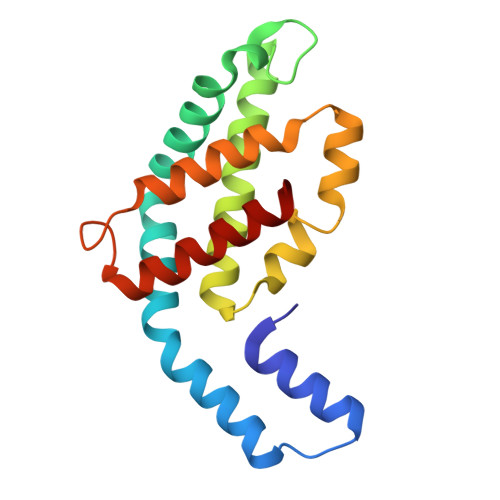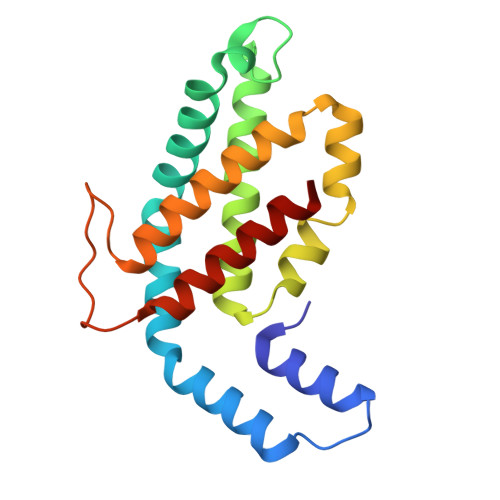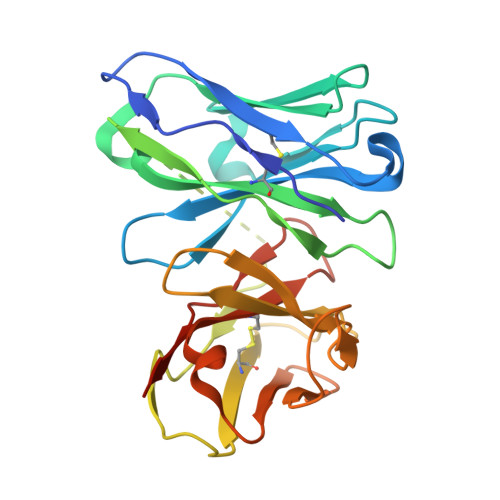Antibody-like recognition of a gamma delta T cell receptor toward a foreign antigen.
Rashleigh, L., Venugopal, H., Rice, M.T., Gunasinghe, S.D., Sok, C.L., Gherardin, N.A., Almeida, C.F., Van Rhijn, I., Moody, D.B., Godfrey, D.I., Rossjohn, J., Gully, B.S.(2025) Structure
- PubMed: 40744007
- DOI: https://doi.org/10.1016/j.str.2025.07.006
- Primary Citation of Related Structures:
9MGB, 9MKO, 9O60, 9O61, 9O62 - PubMed Abstract:
The antigen recognition principles of B cells and αβ T cells have been well described compared to those of the γδ T cell. By way of their specificity conferring receptor (γδTCR), γδ T cells can directly bind proteinaceous antigens. A known γδ T cell and B cell model antigen is phycoerythrin (PE), a light harvesting protein from rhodophytes and cyanobacteria. Here we probed human γδTCR reactivity to PE, in which a Vδ1Vγ5 TCR bound directly to induce proximal signaling and cellular activation. We determined the cryoelectron microscopy (cryo-EM) structure of the γδTCR-phycoerythrin immune complex. We then determined the cryo-EM structures of an antibody fragment and an αβTCR bound to PE. This revealed convergent use of apical aromatic residues to mediate contacts with a common PE epitope. Comparative analyses of the γδTCR revealed multiple antibody-like characteristics, including an enrichment of apical aromatic residues. Our findings reveal further distinct facets of antigen recognition by the γδTCR.
- Infection and Immunity Program & Department of Biochemistry and Molecular Biology, Biomedicine Discovery Institute, Monash University, Clayton, VIC, Australia.
Organizational Affiliation:




















